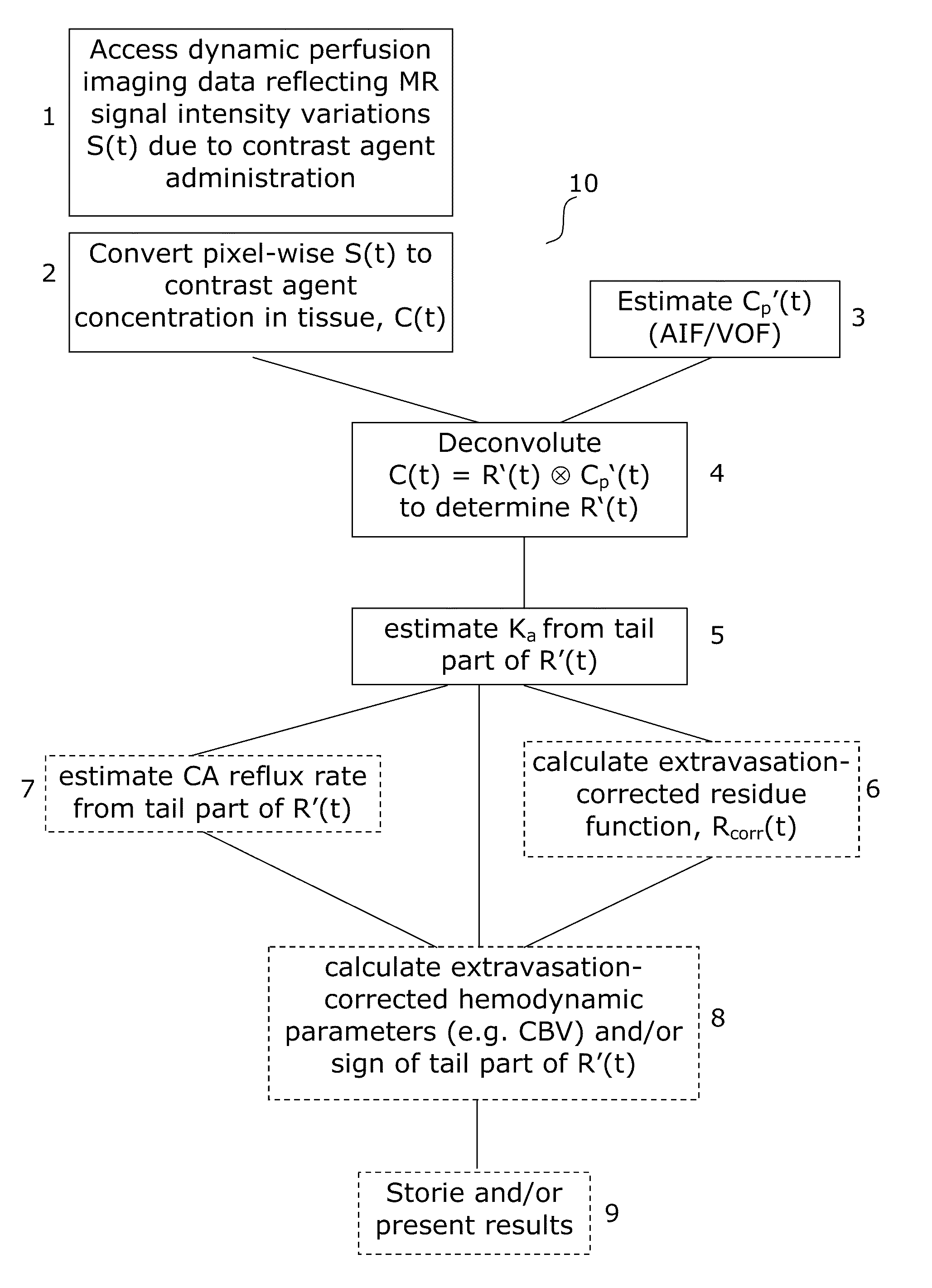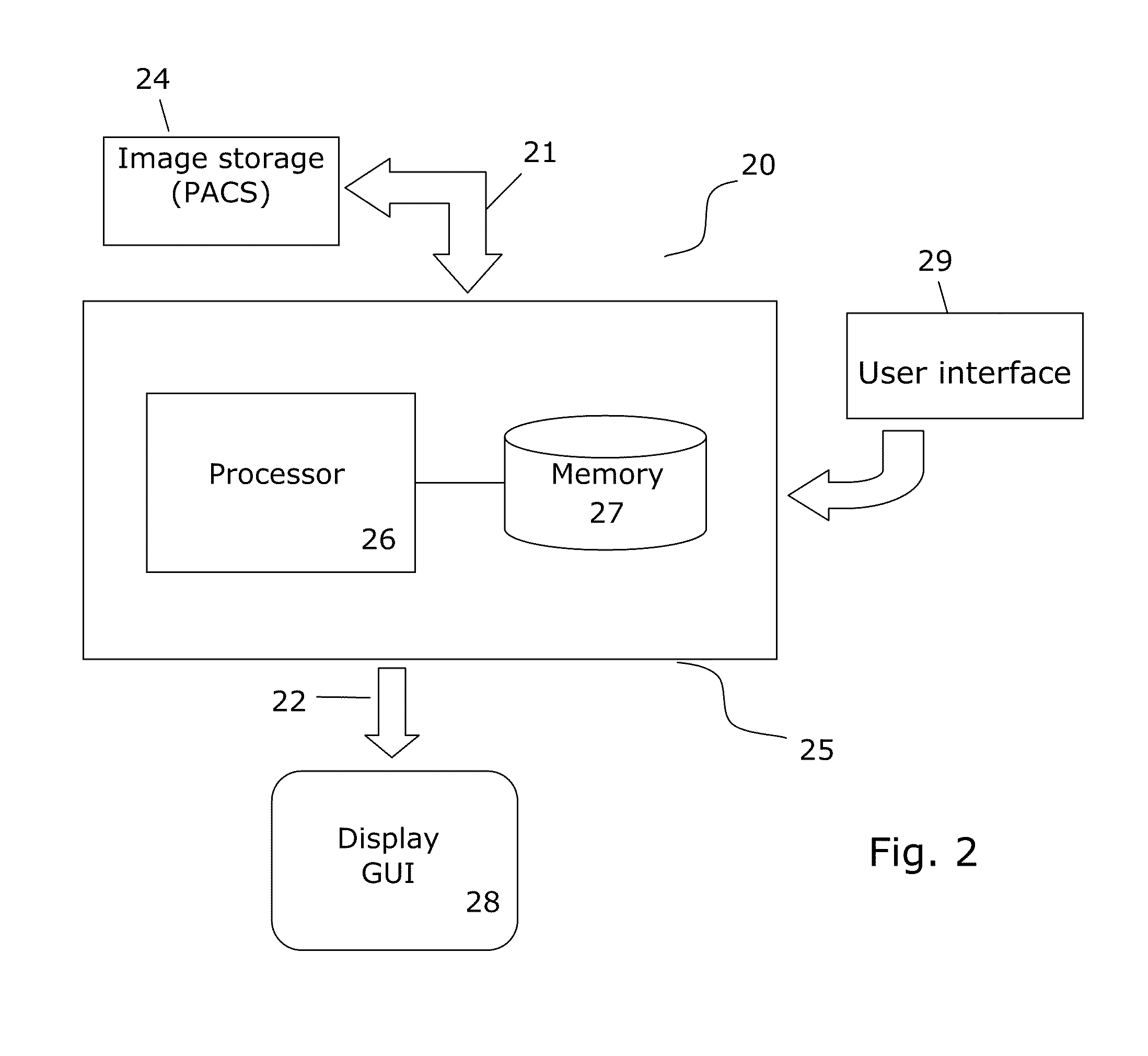Estimating and correcting for contrast agent extravasation in tissue perfusion imaging
a tissue perfusion imaging and contrast agent technology, applied in image data processing, health-index calculation, sensors, etc., can solve the problems of confounding effect on tumor blood volume and perfusion estimation, inability to accurately estimate the extravasation of contrast agents, and inability to detect the presence of contrast agents in the intravascular spa
- Summary
- Abstract
- Description
- Claims
- Application Information
AI Technical Summary
Benefits of technology
Problems solved by technology
Method used
Image
Examples
Embodiment Construction
[0059]The generalized flow diagram of FIG. 1 embodies the methods for correcting perfusion image data according to the various aspects of the invention. FIG. 1 further embodies the layout of software applications according to the various aspects of the invention.
[0060]The invention can be implemented by means of hardware, software, firmware or any combination of these. The invention or some of the features thereof can also be implemented as software running on one or more data processors and / or digital signal processors.
[0061]FIG. 2 illustrates a medical image analysis system 20 for implementing different embodiments for the various aspects of the invention.
[0062]The system 20 has means 21 for receiving or accessing image data to be processed or already processed (i.e. post-processed) image data from an image recording apparatus such as a CT or MR scanner and / or internal or external storage 24 holding images recorded by such apparatus such as a PACS. The means 21 may e.g. be a data ...
PUM
 Login to View More
Login to View More Abstract
Description
Claims
Application Information
 Login to View More
Login to View More - R&D
- Intellectual Property
- Life Sciences
- Materials
- Tech Scout
- Unparalleled Data Quality
- Higher Quality Content
- 60% Fewer Hallucinations
Browse by: Latest US Patents, China's latest patents, Technical Efficacy Thesaurus, Application Domain, Technology Topic, Popular Technical Reports.
© 2025 PatSnap. All rights reserved.Legal|Privacy policy|Modern Slavery Act Transparency Statement|Sitemap|About US| Contact US: help@patsnap.com



